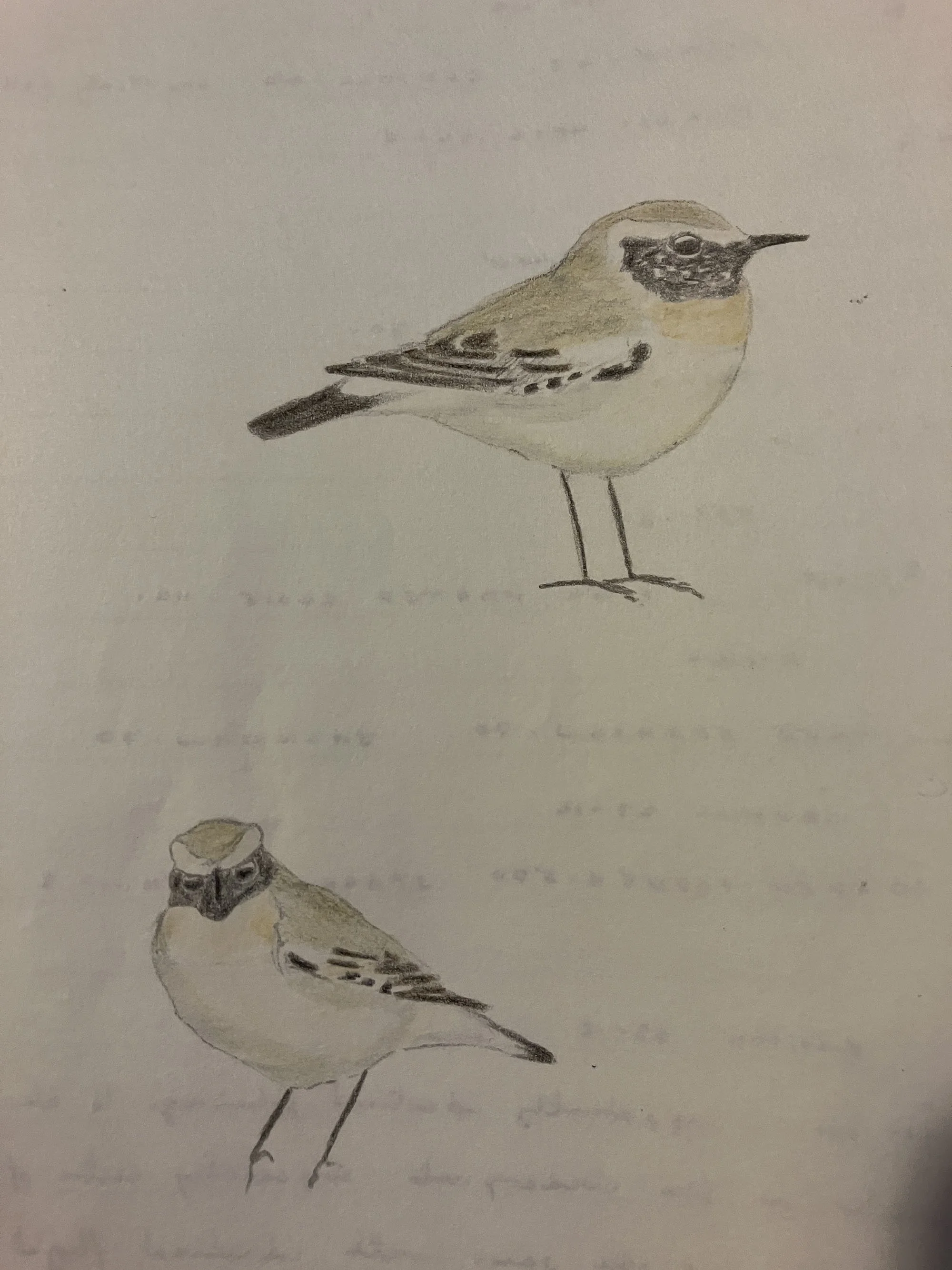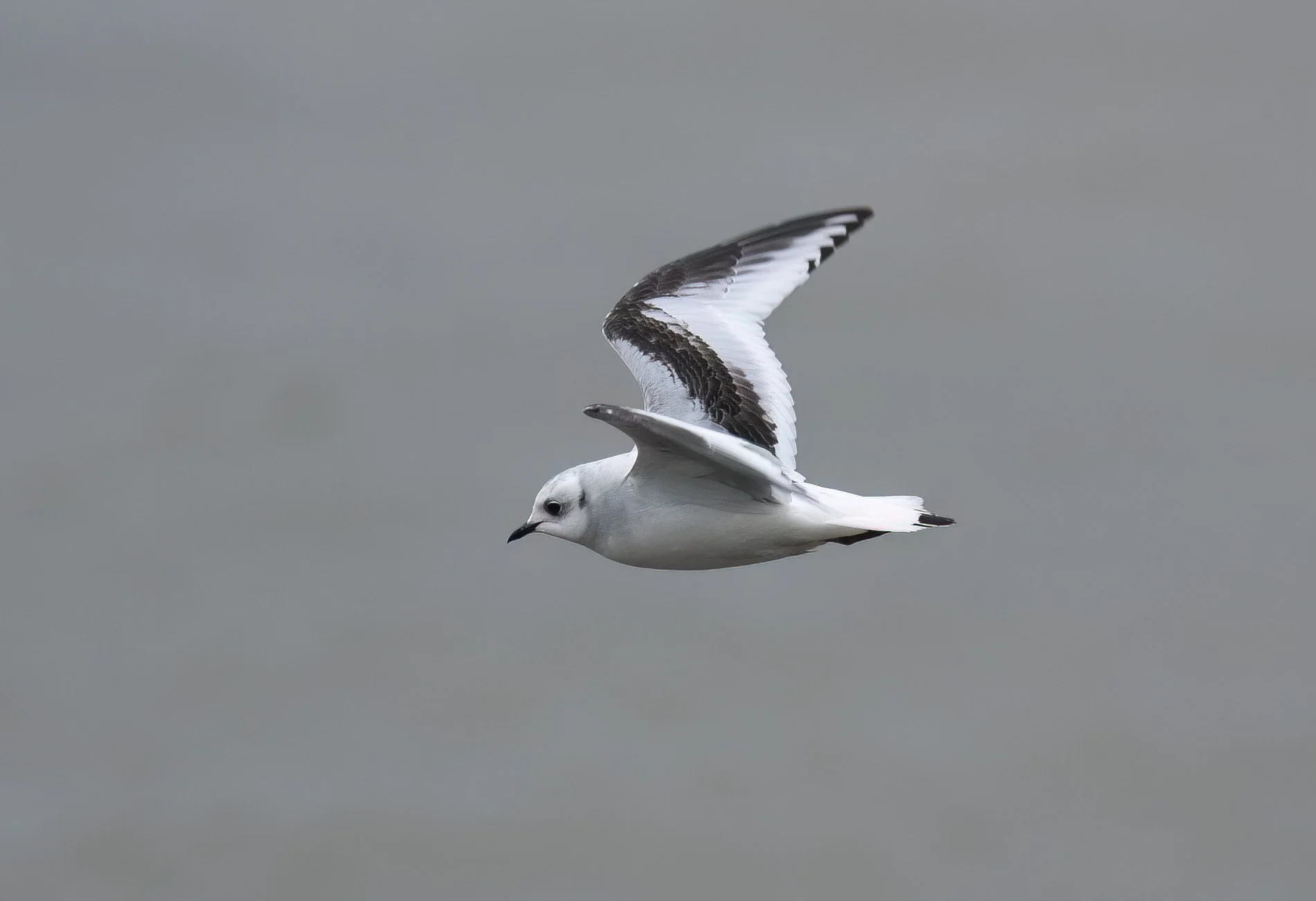Ross’s Gull — the holy grail
It is one of those birds with a mythical past and such a strong attraction that every birder surley wants to see one but I was never satisfied with one and as it has now been 18 years since I last saw one I am getting a bit desperate for the chance of another encounter.
Named after the Arctic explorer James Clark Ross the breeding grounds of this delightful little gull were not discovered until 1905 and there is still a lot of uncertainty about the extent of its breeding grounds in the high Arctic and where they winter although most birds frequent areas around the polar ice cap. Records in Britain run back to 1936 when a juvenile - first-winter was found in Shetland. My first opportunity to see one of these jewels came in 1976 when an adult was being seen at Scalby Mills. With no car I relied upon a lift from Derick Robinson and we spent the whole day there on April 10th after the bird had been seen from March 27th - 30th - Little Gull and three Mediterranean Gulls, then a good bird, did not compensate for the lack of Ross’s Gull and to add insult to injury it reappeared at the same spot on April 22nd staying to the 28th but I couldn’t get and am not even sure if I heard about it such were the news systems of the day. My next real chance came during a chilling spell of north-easterly winds in late February 1983 somewhat akin to today’s weather. With our Mini clubman I was up on the Brigg early on February 19th after hearing of the bird on 17th. Notes apart from plumage described it flying up and down the south side of the Brigg dipping to feed with other gulls and sitting on the Brigg as well as picking food off the surface of the water like a phalarope. I was sufficiently impressed to drive to Filey two days on the trot. With the Nikon F301 and the Sigma APO 400 f5.6 manual focus lens I took some memorable slides which have now become very very damaged - below the scans of said slides
If this had been in focus it would have been acceptable in the day
My next two encounters with the Arctic waif were in the harbour at Thurso, about as far north as you can get in mainland Scotland - en route to Shetland in April 1985 we took in the long staying adult on April 21st 1984 and then there was January 2005. Still being interested in my British list and never having seen a Desert Wheatear news of a male wintering in Freswick Bay near Wick and free rail travel saw us planning a long weekend trip to the northern extremities setting off on January 10th. The journey north went well but I had actually planned nothing other than the train journey! We arrived in Wick in the depths of a very cold January and casually asked about car hire - a very dodgy Mini Metro was picked up from a local garage, not a lot of brakes or anything else! and we managed to log into a local Motel with not a lot of heating but some spare bed covers. The Desert Wheatear was very obliging but travelling light I took no camera but my field notebook. An additional attraction was the adult Ross’s Gull that had returned to Thurso for another winter and we duly watched it performing well and also added three Iceland Gulls including an exquisite adult, several Black Guillemots and Long-tailed Ducks, three diver sp Velvet Scoters and a flock of 44 Greenland White-fronts. It still being Hogmanay, apparently, we managed to get invited to a few people’s houses for Whisky after a meal in the local tavern which made the Motel room a bit warmer. The journey back also went Ok to Inverness but there I had managed to mix up 00:10 on Saturday and Sunday so we were on Inverness station at 22:30 at night with no train until mid-morning next day. Went to the local Police station and in the spirit of the day they rang a B&B for us and we ended up with a warm bed for the night rather than a cold night on Inverness station.
Desert Wheatear Skirza , Freswick Bay January 1985
Ross’s Gull Thurso January 1985
With two adult Ross’s Gulls seen I stil wanted to see a first-winter and in February 1993 one was being reported at an outfall on the River Ness at Inverness. This was too good an opportunity to miss and it was back onto the East coast main line and a train trip north which I worked out would get me to Inverness hopefully in time to see the bird that afternoon. The train was on time and after a wander through the docks I found the outfall and the bird. a real stunner. Again no camera but I enjoyed sketching it and was back home the following day at zero cost.
First-winter Ross’s Gull Inverness February 23rd 1993.
The following year another adult was twitched at Sunderland on February 28th and a very dodgy slide taken above.
This rich Ross’s Gull spell continued into 1995 when an adult with a faint pink wash and full neck collar joined a summering gang of Little Gulls on Teeside at Greatham Creek. I went twice on June 15th and 25th and took some decent slides but they have suffered badly in the interim and the scans are pretty poor. It was a superb bird but a hot June was not really what you want when watching and Arctic Gull.
Adult Ross’s Gull Greatham Creek June 1995
Adult Ross’s Gull Greatham Creek June 1995
2002 was one of those years - On March 31st my wife was ill and a rapid visit to Hospital was confounded by a phone call telling me a Ross’s Gull was at Blacktoft Sands!!! just up the Humber — I somehow managed to get out later amid reports of it passing Brough Haven and presumably my local patch but I failed miserably and guess I will never have another chance of one in the Humber. Later in the spring an adult turned up at Scarborough and I twitched it on March 16th watching it walking about on the footpaths on castle hill avoiding passers by and birders’ tripods. Digi-scoping by this stage my images were pin pricks.
The adult Ross’s Gull at Scarborough March 2002.
Five years passed with no accessible Ross’s Gulls and then word came of a long staying first-winter at Ormsary on the Mull of Kintyre no short journey but a first-winter and I now had a camera a Canon iDIIN and a 300f4 lens. Thus after much deliberation in late January 2007 four of us, Kev DuRose, Dave Jenkins, Mike Weedon and myself headed to Scotland hopefully taking in the Barrow’s Goldeneye that was wintering on the River Teith at Callander. the weather forecast was shall we say mixed but sounded better on the Sunday than Saturday with at least a chance of some brighter spells. We arrived in Callander after an overnight drive to find people canoeing down the main street but through the torrential rain we did see the duck before traversing Scotland and arriving somewhere near Ormsary where we found a B&B and settled in to dry out and check the weather for the following day. The MET men still said a brighter day but needless to say they were 100% wrong and it peed down all day. Arriving at the site where the bird had been feeding not surprisingly we were the only people there but the bird did not take a lot of finding as it was feeding over a small outfall near a fish farm where you could literally stand within 5m of it as it fed unconcerned dipping in the abundant water. My images were OK given the conditions but could have been so much better.
KDD, DJJ and yours trult getting very wet at Ormsary January 2007.
Ross’s Gull over the loch with Black-headed Gulls
Water droplet on its bill tip - we had lots of water droplets dripping off us!
Getting close to the bird was no problem at times you could almost touch it
We were often looking down on it from a small raised area as it dip fed over a small stream
In the afternoon it landed on a muddy area and paddled about getting worms
By the end of 2022 there had been 105 records in Britain but in recent years records have become much less frequent probably as a result of the rising sea temperatures in the Arctic impacting breeding success but also changing the location of wintering areas.
For some years I had the book by Michael Densley, In Search of Ross’s Gull but I lent it to a colleague and sadly he died before it was returned; I see copies now trading at over £100.
Hopefully an accessible stayer will appear sometime soon and even if it involves a long drive or train trip I will need to go - a recent long staying first-winter in the Netherlands produced some amazing images and I was almost tempted - next time.

























